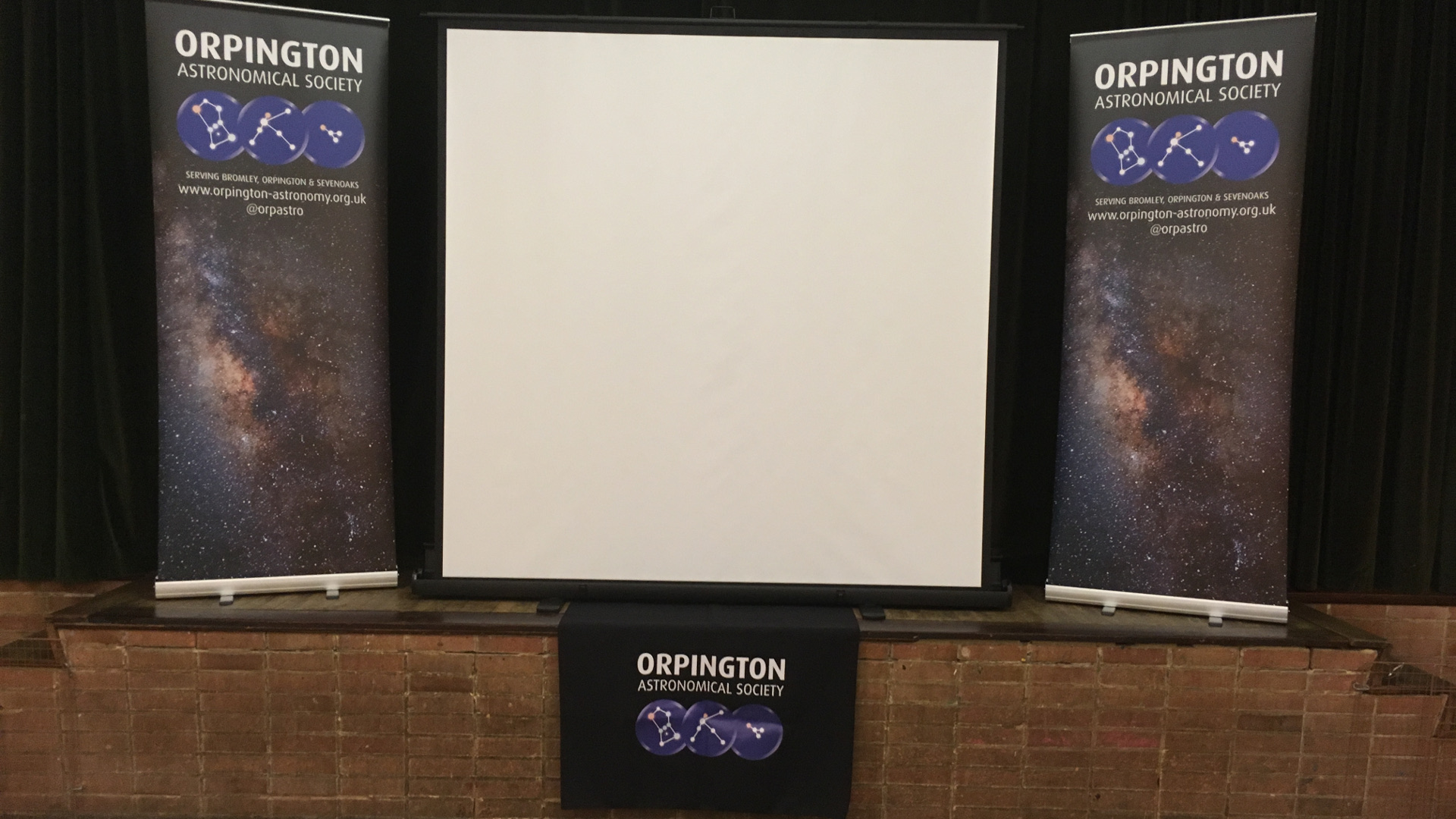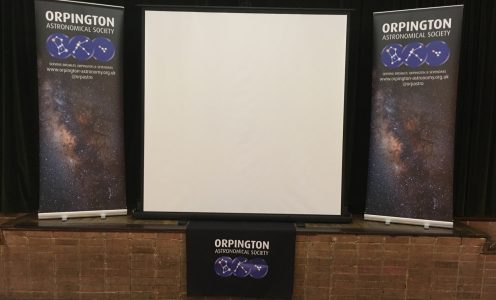OAS Society Talk ~ June 2019 ~ Tony Sizer
Tony concluded his talk with the title, so perhaps I should start with the finish and end with the end ~ so, let me explain that! Our society Programme Secretary, Tony Sizer, had stepped in to cover for our published speaker, who being a researcher, had to cancel attending because she was, well, researching. Hmm! So far this doesn’t seem to be getting any clearer but bear with me.
Let’s go with this! The published speaker had to cancel because she was working and our own Tony Sizer stepped in to talk about the scale of the Universe; giving his presentation the title, ‘The Stars, Like Dust’. However, having finished his talk, then he explained the reason behind the title ~ how’s that?
First, a ‘thank you’ to Tony for stepping in. We are very lucky at the society in having two presenters at Greenwich Observatory as members and should there be a hiatus with a speaker, we can usually count on one of them to step in. We are twofold lucky in that both have a plethora of talks available (or so it seems) and both are really good speakers. How lucky is that?*
‘The Stars, Like Dust’, is the title of an Isaac Asimov book ~ he being a favourite author of Tony ~ published in 1951 and visualises a galaxy where many planets of countless stars are inhabited by human societies. The clue to the presentation topic is in the title and the link was most appropriate.
The size of the Universe is immense with a scale to defy imagination, in fact the English language, probably most languages, have no words which can aptly describe it. I also give a talk on the topic, so believe me I have checked! But Tony gave it a go and, from the comments from the audience afterwards, did so to the satisfaction of all.
Tony has taught the Astronomy courses at Greenwich and is the Society for Popular Astronomy (SPA) Adviser for Astronomy GCSE, and his experience of that came through. This had shown him that an effective way of describing scale is by using models and Tony started with a practical demonstration of the Earth to Moon distance using a football, string and golf ball (cue for some audience participation); of course, many underestimate the distance, even at this small scale. This led to how we can model the Solar System and Tony cited the practical example of the Otford Solar System model; well known to many an OAS member. At this scale the next nearest star is in the USA!
Modelling the number of stars in Milky Way is a large scale jump, so Tony thought about using A4 squared graph paper with each sheet containing 50,000 tiny squares; each small square a star. Of course, for a school lesson this would be quite a cost, as to equal the number of galaxy stars would take 8,000 packs of paper, costing £160,000! This amount of paper would form a cuboid 6x4x1 metres and take a class of children 55 years to cut up into the individual tiny squares.
Modelling the size of a galaxy was a scale jump again. This time Tony suggested London with its postal areas as the Milky Way. Placing Charing Cross (the Eleanor Cross) as the centre, the Sun would be just about at (you’ve guessed it) Greenwich. At this scale, 1 foot would represent 1 light year and Tony described the locations of various stars, clusters and nebulas as places within the London postal area; the caveat being that these were the objects on the plane of the galaxy.
Star distance calculations using Cepheid Variables were discussed and the difficulty measuring exact locations highlighted. Tony moved on to the scale of the Universe, highlighting the Hubble Constant (the rate of expansion of the Universe; also known as Hubble’s Law and/or the Hubble-Lemaitre Law)) ~ a source of recent speculation within the astronomical community.
By this time, the scales were being difficult to take in and one just had to go with it. Save to say that were the Milky Way galaxy about a foot across, then the Observable Universe would be about the size of the Earth.
The vastness of the Universe is a topic that has intrigued and fascinated me just about all my astronomy life and I know that it is difficult not to leave an audience with just open mouths. It was a nicely pitched talk to an astronomy interested audience and Tony left us with much to think about our place in the Cosmos. Stars like dust indeed!
Hugh Alford FRAS
* Twofold lucky, as I told you; although possibly fourfold?


